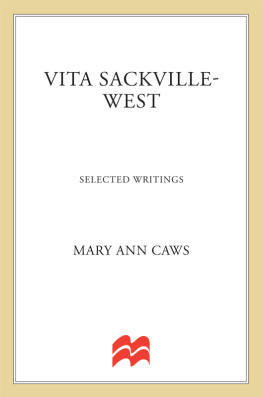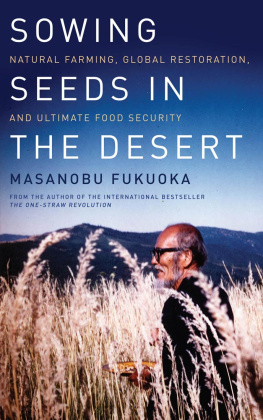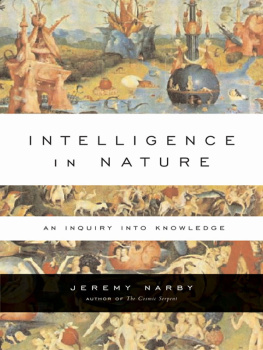Working with Nature
Saving and using the worlds wild places

First published in Great Britain in 2019 by
Profile Books
3 Holford Yard, Bevin Way,
London, WC1X 9HD
www.profilebooks.com
Copyright Jeremy Purseglove, 2019
Cover Design: Peter Dyer
Illustration: Nick Hayes
Typeset in Sina to a design by Henry Iles.
The moral right of the author has been asserted.
All rights reserved. Without limiting the rights under copyright reserved above, no part of this publication may be reproduced, stored or introduced into a retrieval system, or transmitted, in any form or by any means (electronic, mechanical, photocopying, recording or otherwise), without the prior written permission of both the copyright owner and the publisher of this book.
e-ISBN 9781782834960
Hardback ISBN 9781788161596
Working with Nature
Saving and using the worlds wild places
JEREMY PURSEGLOVE

For Sue Taylor,
Laura Purseglove and
Eleanor Purseglove
INTRODUCTION
Gardening the globe
I am in Central Asia, standing on the banks of a mighty river, famous in history as the Oxus, which flows down a gorge where wild tulips glow like fire coals among the rocks. From the almond and walnut forests of this Eden, flower bulbs were carried along the Silk Road to Europe. Emerging from the cliffs, the river fans out to create an immense inland delta of glittering channels, islands and silvery scrub. Eagles soar over this great wilderness and above them, seeming to float in the smoke-blue air, rise the snow-capped peaks of the majestic Pamirs.
Below me dredgers are mending a bank broken by floods which have obliterated farms and apricot orchards under a waste of river cobbles. Against the scale and elemental force of this river, the great machines seem like childrens toys and the massive cubes of concrete shoring the bank appear no more than tumbled dice. As the project environmentalist I debate with the engineers whether to set back the banks to allow the river full rein or reclaim more land as the local people would prefer. But as a warming world melts the mountain snows to threaten unprecedented floods, our old certainties about cultivating nature are challenged as never before.
Surveying this embattled scene I realise that it is over thirty years since rivers took over my life and I entered a world where stone and steel are pitted against mere flowers, but where the seemingly fragile forces of nature seem increasingly able to fight back.

River engineering in Tajikistan with the mountains of Afghanistan beyond. Against the might of nature the concrete blocks seem like tumbled dice.
My father was a botanist and, for as long as I can remember, plants and flowers have been at the centre of my life. An initial interest in flora soon widened to a fascination with landscapes, gardens and wild habitats and into a working life looking for practical ways to protect them, first as an ecologist in the water industry and then as an environmentalist worldwide.
What I do for a living is like gardening on a global scale. Working with engineers and developers, I make decisions that set aesthetics and ecology alongside the need to make the engineering stand up and the balance sheets work. I am not against development. Early in my professional life I came to realise that there is often a creative way of managing landscapes which can bring us their practical benefits without destroying their beauty and biodiversity. We can consume resources, provided we do so carefully and do not consume all of them. What Ive learned of this approach to development is the subject of this book: asking and trying to answer the question as I survey threatened areas of forest and wetland, How can this landscape earn its keep and so secure its future?
My initiation into the complexities and urgency of this question came in the 1970s, when I visited the Biesbosch delta of the Rhine in the Netherlands. This is one of Europes great wetlands and it is now a National Park. At the time, the warden took me into his office and showed me two things: the encyclopedic book of regulations, which had been drawn up to defend the reserve, and an X-ray of his broken ribs. Even in civilised modern Holland, without an army of police to enforce the rules, he had been beaten up when he tried to persuade the local people who lived off the place to leave it alone for the wild birds. This was a lesson I never forgot. There are very few habitats, especially in the developing world, which you can protect by putting a fence around them. The real power over them lies in the hands of the person holding the chainsaw. So, if they are to survive, they need some kind of economic base which is self-policing. As the environmental sound bite goes: Use it or lose it.
In 1977, as the first environmentalist in the British water industry, I was called out by a river engineer to untie a woman from a willow tree. She had warned the engineer that, if he chopped down the tree, he would have to take her with it. I didnt know about river engineers. I didnt then know that rivers had to be engineered. But the engineer explained his dilemma. Left untouched the tree would block the river, which would then inundate the nearby houses, including that of the protester. So would I persuade her to go home and leave him to get on with the job? She made it clear, however, that along with other ratepayers who paid the engineers salary, she valued the river at the bottom of her garden not as a concrete drain but for its willows and dragonflies. Here was a seemingly irreconcilable conflict. But eventually the engineer and I designed a scheme which reduced the floods and still protected the trees.
My subsequent working life has been as a broker for nature conservation with civil engineers, those supremely practical professionals who build roads, supply water and facilitate agriculture. Like the attendants of apocalypse, they are the first on the scene to repair damage after flood, drought or even war. Theirs is a world of concrete, steel, specifications and mathematical certainties. Mine is a world of interesting insects, unusual weeds and the indefinable ways we value beautiful places. On the face of it these worlds are mutually exclusive; indeed, often on a collision course. But it didnt turn out like that during my time in the water industry. We found we could work together that we could both control floods and conserve river habitats.
Engineers are excellent problem-solvers. Once they are presented with a course of action, they set to work. They can use the machines that had previously canalised rivers to create ponds even put the bends back in rivers they had previously straightened. Mighty dredgers can be used to transplant delicate forget-me-nots and create a niche for nesting moorhens. They can do gardening on a heroic scale, and which is no mere prettification. Nature conservation is now a mainstream activity of the Environment Agency and trees are seen as a practical ways of reinforcing river banks, while adjacent wetlands are valued as a safety valve for floodwater. Working with nature is now understood as the most effective way to control flooding. This approach is no longer confined to Britain. It is practised by American engineers working throughout the USA and in 2007 I worked with a local community in Tajikistan to plant a new forest to prevent the banks of the mighty River Oxus from eroding and to help control the floods.












